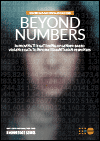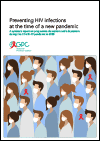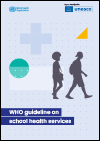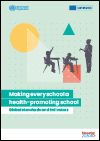What's New
Displaying results 501 - 510 of 4913

Resource | Publications,
The first comprehensive in-depth research into the issue covering 170 countries, finds that though there has been progress on women’s representation overall in public administration, persistent gaps remain. Women continue to hit a glass ceiling and glass walls that stop them from advancing to positions at the highest levels of power and influence, including in the COVID-19 response. The report provides practical recommendations to help shatter these glass ceilings and glass walls and to reimagine and redesign more gender inclusive and diverse public administrations.

Resource | Publications,
In last year’s letter, we touched on the COVID-19 pandemic, then just bursting into our collective consciousness. A year later, much of the world is deep in another brutal wave, an outcome predicted by public health experts, and one that could and should have been prevented had political decision-makers been willing to act sooner and take human rights seriously.
This only underscores the lessons to be learned, many of them first imparted by the HIV pandemic, but too often ignored. COVID has demonstrated yet again that public health is fundamentally connected to human rights and that failing to respect and protect rights — and, especially, to take positive measures to fulfill rights — leads to more infection, illness, and death. Although COVID differs from HIV in important ways, they both travel along the fault lines of social inequities. The only way we will overcome both pandemics is if we act to respect, protect, and fulfill human rights.

Resource | Publications,
MICS surveys measure key indicators that allow countries to generate data for use in policies, programmes, and national development plans, and to monitor progress towards the Sustainable Development Goals (SDGs) and other internationally agreed upon commitments. The objective of this snapshot of key findings is to facilitate the dissemination and use of results from the Tonga MICS, 2019. The survey methodology and detailed tabulations based on the data collected are available in the Survey Findings Report.

Resource | Publications,
Consisting of five separate booklets, the World Drug Report 2021 provides an in-depth analysis of the global drug markets and paints a comprehensive picture of the measurable effects and potential impact of the COVID-19 crisis on the world drug problem.
The World Drug Report 2021 is aimed not only at fostering greater international cooperation to counter the impact of the world drug problem on health, governance and security, but also, with its special focus on the impact of the COVID-19 pandemic, at assisting Member States in anticipating and addressing challenges that may arise in the near future.

Resource | Publications,
As we enter the second year of the COVID-19 pandemic, it is abundantly clear that this is a crisis of monumental proportions, with catastrophic effects on people’s lives and livelihoods and on efforts to realize the 2030 Agenda for Sustainable Development. Historically, pandemics have served as catalysts for political, economic and social change, and that still holds true today. The year 2021 will be decisive as to whether or not the world can make the transformations needed to deliver on the promise to achieve the SDGs by 2030 – with implications for us all.
The Sustainable Development Goals Report 2021 uses the latest available data and estimates to reveal the devastating impacts of the crisis on the SDGs and point out areas that require urgent and coordinated action. The report was prepared by the United Nations Department of Economic and Social Affairs in collaboration with more than 50 international agencies.

Resource | Publications,
The guide is for gender-based violence coordinators or specialists who need to gather information on gender-based violence, particularly through the use of qualitative data. The data gathered can be fed into humanitarian needs overviews (HNOs), which in turn can inform the whole humanitarian response, be it protracted or acute. Most importantly, this guide can help in the development of products that serve to amplify the voices of women and girls and ensure that these voices directly inform the programmes that are designed to serve them.

Resource | Publications,
People who sell or exchange sex in humanitarian situations have particular health and protection needs that are often not well addressed. This document provides operational guidance on how best to meet these needs, and ensure that people who sell/exchange sex have support, and access to quality, non-discriminatory health and protection services.

Resource | Publications,
Throughout 2020, the COVID-19 pandemic swept around the world, threatening decades of hard-won development and public health gains. Global and country level efforts to control the AIDS epidemic are facing unprecedented threats. Hard-won gains in HIV prevention, with the number of people newly infected with HIV declining by 23% since 2010, are in danger of being reversed by the COVID-19 pandemic—and populations already left behind are at risk of falling further behind.

Resource | Publications,
School health services (SHS), as defined in this guideline, are services provided by a health worker to students enrolled in primary or secondary education, either within school premises or in a health service situated outside the school. Most countries have some form of SHS, but many such programmes currently are not evidence-based, are not implemented well, are underfunded and/or are delivered with limited reach and scope. In all WHO regions, school-age children and adolescents (those aged 5–19 years) experience a range of largely preventable health problems, including unintentional injury, interpersonal violence, sexual and reproductive health issues, communicable diseases, noncommunicable diseases and mental health issues.

Resource | Publications,
The right to education and the right to health are core human rights and are essential for social and economic development. Now, more than ever, it is important to make all schools places that promote, protect and nurture health; that contribute to wellbeing, life skills, cognitive and socioemotional skills and healthy lifestyles in a safe learning environment. Such schools are more resilient and better able to ensure continuity in education and services, beyond the delivery of literacy and numeracy.





